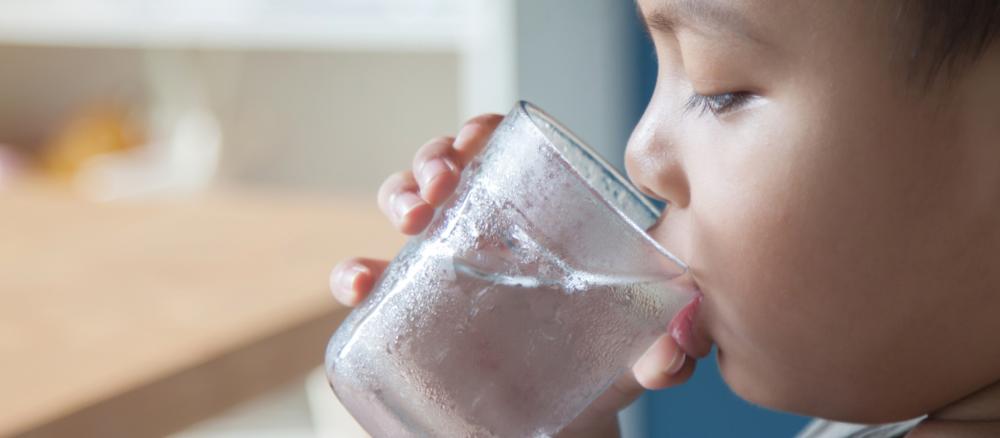Following the U.S. Environmental Protection Agency’s (EPA) announcement of proposed Maximum Contaminant Levels (MCLs) on certain per- and polyfluoroalkyl substances in drinking water, the Minnesota Department of Health (MDH) and Minnesota Pollution Control Agency (MPCA) issued this statement.
Summary statement
The Minnesota Department of Health (MDH) and Minnesota Pollution Control Agency (MPCA) welcome the U.S. Environmental Protection Agency’s (EPA) draft Maximum Contaminant Levels (MCLs) as a critical step toward reducing Americans' exposures to per- and polyfluoroalkyl substances (PFAS) through drinking water.
Minnesota has been working for decades to protect people from negative health effects of PFAS exposure. For more than 20 years, our state has led efforts to recognize the impacts of PFAS and protect Minnesotans by establishing health-based guidance values for PFOS, PFOA and several other PFAS. Public drinking water systems have been using these values as their guide to provide safe drinking water for customers and private well owners have been using this guidance to ensure the safety of their water.
MDH and MPCA are committed to working with local partners and ensuring all Minnesotans have access to safe drinking water. The Governor’s budget calls for over $35 million to identify and protect drinking water from PFAS. MDH will work with public water systems to determine how the draft MCL values, if they were to become the final values, would impact their operations and what mitigation strategies might be needed. MPCA continues to investigate sites where PFAS exceeds health-based guidance or regulatory levels in drinking water to determine the likely source and holds responsible parties accountable to implement a response action.
While the draft MCLs will have no immediate impact on public water systems in the state, and no immediate action is required, MDH will continue to test for PFAS in systems across the state and provide guidance to systems when their results indicate a potential health concern based on current health-based values. MDH provides those testing results through its Dashboard for PFAS Testing in Drinking Water.
New and evolving science shows clearly that humans are more sensitive to PFAS than was previously thought, so MDH scientists are re-evaluating and revising the MDH PFAS health-based guidance values to better protect public health. These values will be designed to best protect Minnesota’s unique populations and communities, with a goal of completing this work in 2023.
Background
PFAS are extremely stable and do not break down in the environment. They are a concern because exposure has been linked to harmful health effects in people over time. PFAS can be found in water, soil, air and consumer products throughout the world, including Minnesota.
The EPA is proposing Maximum Contaminant Levels (MCLs) for two per- and polyfluoroalkyl substances (PFAS) — PFOA and PFOS — in drinking water. An MCL is the maximum amount of a particular contaminant allowable in drinking water without additional mitigation. EPA is proposing the new MCLs to be 4 parts per trillion (ppt) for PFOS and 4 ppt for PFOA.
EPA is also proposing that four PFAS (PFBS, PFHxS, GenX and PFNA) be evaluated in combination with each other, using an approach called a Hazard Index. A hazard index is calculated by comparing a measured drinking water value with a standard.
EPA will collect public comments on the MCLs and consider revisions before they are finalized into a new federal drinking water rule in late 2023 or early 2024. The public comment period will be 60 days from the time the proposed rule is published in the Federal Register. According to EPA’s draft proposed rule, systems would have several years to begin complying once the rule is final.
The rule may require changes in the way that certain drinking water supplies in Minnesota are managed to address PFAS. MDH is collecting sampling data that will be used to assess how public water systems’ results compare with the drafted regulatory values. MDH will keep systems informed and work with systems if action needs to be taken to meet new drinking water values for PFAS.
MPCA investigates instances when PFAS exceeds health-based guidance or regulatory levels in drinking water to determine the source and to hold responsible parties accountable to implement a response action.
We understand for some Minnesotans, these changes may cause deep concern and result in more questions. We are committed to partnering with local communities and ensuring all Minnesotans have access to safe drinking water.
The draft MCLs underscore the importance of Minnesota’s PFAS Blueprint, which outlines a comprehensive approach to PFAS pollution, including preventing that pollution at the source to avert future problems. This comprehensive approach requires collaboration and cooperation to address PFAS across Minnesota while underscoring the importance of the Governor’s budget requests for PFAS and legislative proposals to prevent PFAS pollution.
More information about PFAS and drinking water can be found on the MDH website: Per- and Polyfluoroalkyl Substances. Information about the comprehensive plan to address PFAS pollution can be found on the MPCA website: Minnesota’s PFAS Blueprint. Information about the National Primary Drinking Water Regulation (NPDWR) for PFOS and PFOA can be found on the MDH website: PFAS Standards for Drinking Water.
For more information
Doug Schultz
Minnesota Department of Health Communications
651-201-4993
doug.schultz@state.mn.us
Adam Olson
Minnesota Pollution Control Agency Communications and Engagement
651-757-2041
adam.j.olson@state.mn.us
